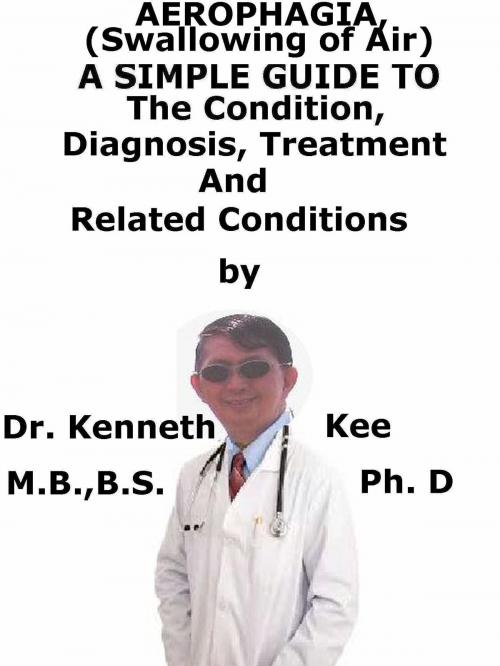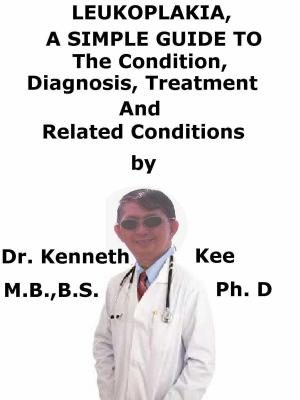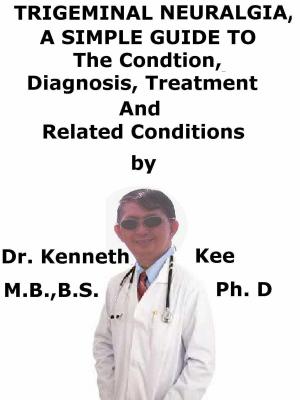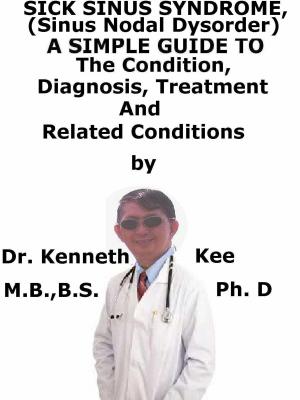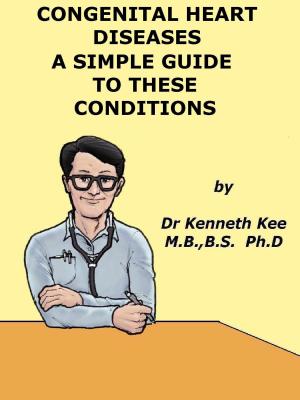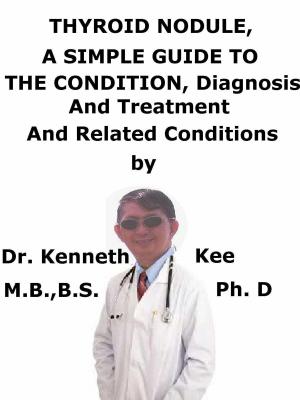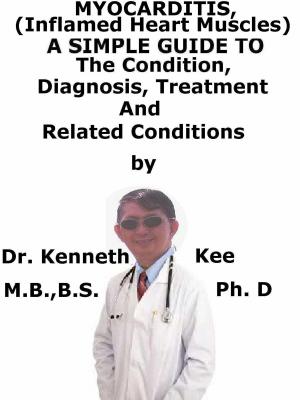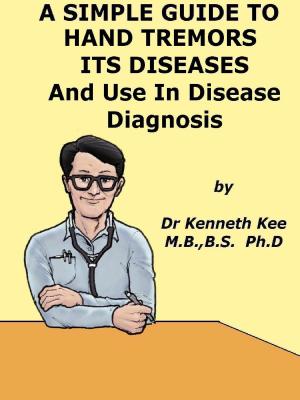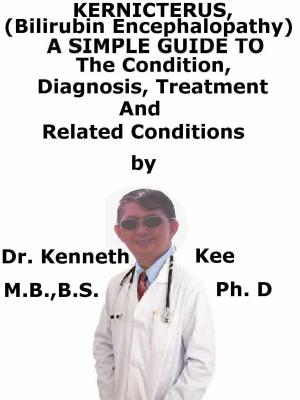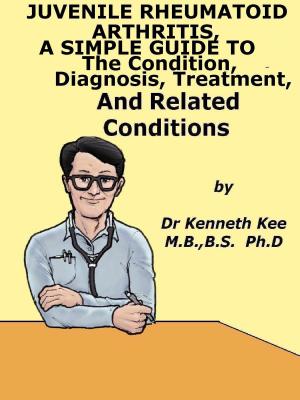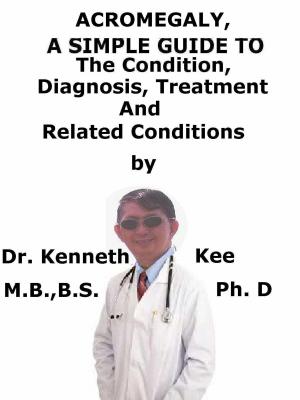Aerophagia, (Swallowing of Air) A Simple Guide To The Condition, Diagnosis, Treatment And Related Conditions
Nonfiction, Health & Well Being, Medical, Specialties, Internal Medicine, Gastroenterology, Health, Ailments & Diseases, Abdominal| Author: | Kenneth Kee | ISBN: | 9781370386406 |
| Publisher: | Kenneth Kee | Publication: | April 25, 2017 |
| Imprint: | Smashwords Edition | Language: | English |
| Author: | Kenneth Kee |
| ISBN: | 9781370386406 |
| Publisher: | Kenneth Kee |
| Publication: | April 25, 2017 |
| Imprint: | Smashwords Edition |
| Language: | English |
Aerophagia is the voluntary disorder of excessive air swallowing, which goes into the stomach.
Aerophagia is the swallowing of air indicating that air enters the gastrointestinal tract (gut) rather than the lungs.
The air may get retained in the esophagus and stomach temporarily and can be passed out with an eructation (belch or burp).
Aerophagia is not a serious condition but may result in gas bloating, indigestion and abdominal discomfort.
The most noticeable symptom though is excessive burping.
Sometimes a patient will swallow air in order to help his or her food go down into the digestive system rather than stuck in the gullet where it may cause chest discomfort or phlegm.
The air in the stomach or abdomen is not due the gas in fizzy drinks or fermentation by bacteria.
There are other causes of gas in the gut which may not have entered through the mouth with the swallowing of the air.
This should be differentiated with aerophagia which particularly refers to the act of swallowing air.
Gas may enter the digestive tract through carbonated beverages, bacterial action in the bowels and even some gas comes out of the bloodstream and into the gut.
Aerophagia is linked with eating too quickly, chewing gum, smoking, CPAP air pressure (if it is too high) and wearing loose dentures.
There are rare disorders that may be linked with aerophagia, such as an anxious behavior in those with a cognitive deficiency from birth.
Aerophagia may also interestingly happen in the setting of CPAP (Continuous Positive Airway Pressure) or bi-level use if the treatment pressure is too high.
CPAP is the delivery of pressurized air through a face mask to support the upper airway and treat sleep apnea with the air entering the lungs through the trachea.
In people with cervical spinal blockages, breathing in can cause air to enter the esophagus and stomach.
Excessive air swallowing will manifest with:
1. Excessive burping
2. Indigestion (dyspepsia)
3. Bloating (sensation of fullness)
4. Excessive flatulence (uncommon)
5. Abdominal discomfort
6. Louder or more active bowel sounds
Diagnosis is by the history of swallowing air. rapid eating, loose dentures, mouth breathing
Delayed detection of aerophagia may result in gastric distension, which in turn could raise the diaphragm or induce aspiration of the stomach contents into the lungs or pneumatic rupture of the esophagus due to excessive gastric insufflations.
Aerophagia is a dangerous side effect of non-invasive ventilation (NIV), often used in treatments of respiratory disorders and cardiovascular critical care or in surgery when a general anesthetic is needed.
Aerophagia may also interestingly happen in the setting of CPAP (Continuous Positive Airway Pressure) or bi-level use if the treatment pressure is too high.
People with heartburn tend more likely to swallow air with CPAP use.
This is because of the acid of the stomach inducing the lower esophageal sphincter to relax
Aerophagia is not a serious medical disorder.
It should be prevented as it can produce abdominal or chest discomfort.
Treatment measures should be directed at the underlying cause where possible.
Some dietary and lifestyle measures are:
1. Eating small bites of food
2. Chewing slowly and swallowing completely before filling the mouth again
3. People who talk for a living should take note of whether they are speaking to fast or breathing through their mouth only during talking.
With CPAP, it may also be essential to reduce the pressure and change the patient to a different type of treatment, such as bi-level.
If heartburn occurs, treatment of heartburn or GERD may be useful.
There are also other ways to decrease the effects of CPAP gas
Avoid chewing gum or smoking.
TABLE OF CONTENT
Introduction
Chapter 1 Aerophagia
Chapter 2 Causes
Chapter 3 Symptoms
Chapter 4 Diagnosis
Chapter 5 Treatment
Chapter 6 Prognosis
Chapter 7 Flatulence
Chapter 8 Dyspepsia
Epilogue
Aerophagia is the voluntary disorder of excessive air swallowing, which goes into the stomach.
Aerophagia is the swallowing of air indicating that air enters the gastrointestinal tract (gut) rather than the lungs.
The air may get retained in the esophagus and stomach temporarily and can be passed out with an eructation (belch or burp).
Aerophagia is not a serious condition but may result in gas bloating, indigestion and abdominal discomfort.
The most noticeable symptom though is excessive burping.
Sometimes a patient will swallow air in order to help his or her food go down into the digestive system rather than stuck in the gullet where it may cause chest discomfort or phlegm.
The air in the stomach or abdomen is not due the gas in fizzy drinks or fermentation by bacteria.
There are other causes of gas in the gut which may not have entered through the mouth with the swallowing of the air.
This should be differentiated with aerophagia which particularly refers to the act of swallowing air.
Gas may enter the digestive tract through carbonated beverages, bacterial action in the bowels and even some gas comes out of the bloodstream and into the gut.
Aerophagia is linked with eating too quickly, chewing gum, smoking, CPAP air pressure (if it is too high) and wearing loose dentures.
There are rare disorders that may be linked with aerophagia, such as an anxious behavior in those with a cognitive deficiency from birth.
Aerophagia may also interestingly happen in the setting of CPAP (Continuous Positive Airway Pressure) or bi-level use if the treatment pressure is too high.
CPAP is the delivery of pressurized air through a face mask to support the upper airway and treat sleep apnea with the air entering the lungs through the trachea.
In people with cervical spinal blockages, breathing in can cause air to enter the esophagus and stomach.
Excessive air swallowing will manifest with:
1. Excessive burping
2. Indigestion (dyspepsia)
3. Bloating (sensation of fullness)
4. Excessive flatulence (uncommon)
5. Abdominal discomfort
6. Louder or more active bowel sounds
Diagnosis is by the history of swallowing air. rapid eating, loose dentures, mouth breathing
Delayed detection of aerophagia may result in gastric distension, which in turn could raise the diaphragm or induce aspiration of the stomach contents into the lungs or pneumatic rupture of the esophagus due to excessive gastric insufflations.
Aerophagia is a dangerous side effect of non-invasive ventilation (NIV), often used in treatments of respiratory disorders and cardiovascular critical care or in surgery when a general anesthetic is needed.
Aerophagia may also interestingly happen in the setting of CPAP (Continuous Positive Airway Pressure) or bi-level use if the treatment pressure is too high.
People with heartburn tend more likely to swallow air with CPAP use.
This is because of the acid of the stomach inducing the lower esophageal sphincter to relax
Aerophagia is not a serious medical disorder.
It should be prevented as it can produce abdominal or chest discomfort.
Treatment measures should be directed at the underlying cause where possible.
Some dietary and lifestyle measures are:
1. Eating small bites of food
2. Chewing slowly and swallowing completely before filling the mouth again
3. People who talk for a living should take note of whether they are speaking to fast or breathing through their mouth only during talking.
With CPAP, it may also be essential to reduce the pressure and change the patient to a different type of treatment, such as bi-level.
If heartburn occurs, treatment of heartburn or GERD may be useful.
There are also other ways to decrease the effects of CPAP gas
Avoid chewing gum or smoking.
TABLE OF CONTENT
Introduction
Chapter 1 Aerophagia
Chapter 2 Causes
Chapter 3 Symptoms
Chapter 4 Diagnosis
Chapter 5 Treatment
Chapter 6 Prognosis
Chapter 7 Flatulence
Chapter 8 Dyspepsia
Epilogue
